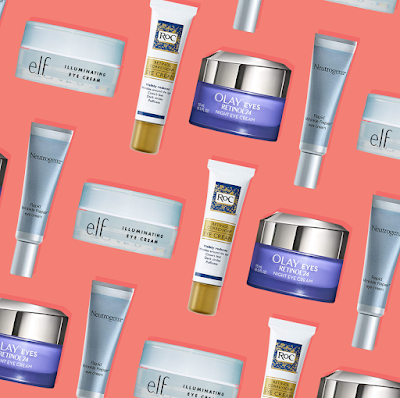
Marketing Tips for Beauty Bloggers
It can be hard to know where to start when entering the world of blogging due to the highly saturated beauty industry, but don’t let that put you off. If you do everything right to properly set up your blog and get your social channels on track, you’ll be the new industry leader in no time! Read on to learn our top tips.
Buy a Domain and Hosting
Don’t rely on name.blogspot.com or something similar, if you want to be taken seriously by brands, you need to self-host. This may sound scary, but it’s very easy to buy a domain, and you can use the same hosting if you want, making setup very easy.
Choose a Design
Whether you use WordPress (like most platforms) or another platform, you can usually choose a theme so that your site displays quickly with a fixed style, and most of the work can be done without a developer. I highly recommend people choose a paid theme over a free one, because a lot of the key things you want (responsive design, detailed CSS styling, etc.) are there, and can be developed further than your traditional basic template.
Get Your Channels
Once you’ve chosen your domain, you’ll want to make sure all of your social channels are available as well. Get them as soon as possible so you don’t miss out. Even if you don’t want to use the platform yet, it might be worth acquiring it ahead of time to reserve a username.
Adopt Tik Tok
Tik Tok is still in its infancy, but it’s become the new hotness and those who adopt the platform quickly will be one step ahead of the competition. Instagram is becoming a very busy place and your voice may get lost, but Tik Tok still offers a great way to reach the masses and quickly establish yourself as a major beauty influencer.
Create Lots of Content
If you really want to rank on Google, each post should be at least 500 words. You should also be producing content on a regular basis. This is why I usually recommend that aspiring bloggers start writing content 3 months before publishing so that they have a backlog of content to plan for and then focus on other tasks like publishing. B. Structure of Social Profiles.
Keyword Research
It might be tempting to write about content that interests you, and you should definitely do that, but you can also benefit from researching how your “competitors” or other websites in your area rank and generate traffic. SEMrush is a great tool for this because you can see the “traffic percentage” which calculates how many people search for that term per month compared to your ranking for that term on Google. If you can find multiple websites with key terms and pages, you can create your own version and get good results in terms of inbound traffic.
Video Video Video
I can’t say it often enough that the future belongs entirely to video. It can be nerve-wracking to step in front of the camera, but the more you do it, the more natural it will feel. Set up a shooting area, get some decent camera equipment (a decent smartphone will do the trick these days) and a tripod, as it needs to be stable. Make sure there’s nothing moving in the background, as this can appear unprofessional and distracting. Plan your video like a blog post, with a good idea of what you’re going to talk about, but without writing a script (unless you really want to).
PR
If you want to be successful on Google and get your brand noticed, you need to appear in magazines, newspapers, radio, and TV. To do this, I recommend adding some beauty writing journalists on Twitter and lending your voice to relevant posts. They’re always in need of case studies or experts speaking on specific topics, and will often link to your site from their publications.
Schedule Social Media Posts
Don’t write all your social media posts at once unless you really have the time. Time is at a premium for most bloggers (as most of us work full-time), so it can be helpful to plan your social media posts ahead of time, either at the beginning of the week or at the beginning of the month. Think about recent posts. So in October, make sure you have a Halloween post on or before the last day. You can use sites like Hootsuite to schedule your posts.
Journorequest
The popular Twitter hashtag Journorequest is a great way to find journalists looking for bloggers or case studies (as mentioned in the link building section). I usually use Tweetdeck to easily browse Journorequest in a nice format. You can also use Journoquest to find brands that might want to work with you. On Tweetdeck, include your brand name in any spelling to ensure you can see when you are mentioned but not directly tagged.
Learn the Basics of Blogging
Whether it’s titles and meta descriptions, heading breakdowns (H1, H2, H3, etc.), or site structure, there are many basic areas of blogging that you need to understand if you want to perform well on Google.
Internal Linking
When writing a blog post, you need to remember that you need three internal links per post. By “internal links” I mean hyperlinks pointing from a blog post to another post on your website. So if you mention other products you’ve written about, you can link to that page on your site, which will help users find more interesting details and help you rank better on Google. Internal linking is one of the most underrated strategies for bloggers.
Attend events
I can’t stress the value of these enough. Whether it’s a beauty event, a marketing event like Take It Offline, or a major conference, you can learn a lot. I should mention that you’ll learn a lot from conference talks, but you’ll learn even more from making connections and networking because the practical advice is invaluable. This also allows you to ask direct questions and receive answers that are relevant to your blog and situation.
Actions
If you really want to see progress, stay motivated, and find opportunities, you should track certain metrics, such as: B. Followers on each social platform. I usually record numbers once a month, on the 1st of each month. This allows me to see when certain channels or platforms are performing well or poorly, which can help me determine if certain actions are working. I also record any features I receive in other publications, as this can be helpful when speaking to other brands.
Set up Google Analytics and Search Console
Search Console (or Webmaster Tools) can help you identify problems with your site, while Google Analytics allows you to measure traffic and conversions (whatever you consider “conversions” to be). GA can also show you where traffic is coming from and to which pages.
Create a Media Kit
When you work with brands, they will often ask for a media kit to review your data and pricing expectations. This not only shows professionalism, but also that you can’t be thick-skinned when it comes to price or terms.
I hope you found this helpful. If you have questions, please feel free to contact us.


